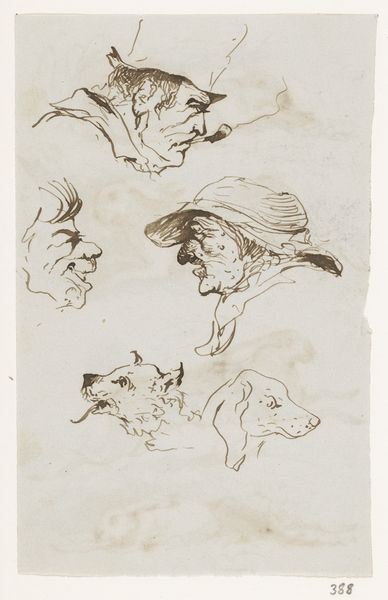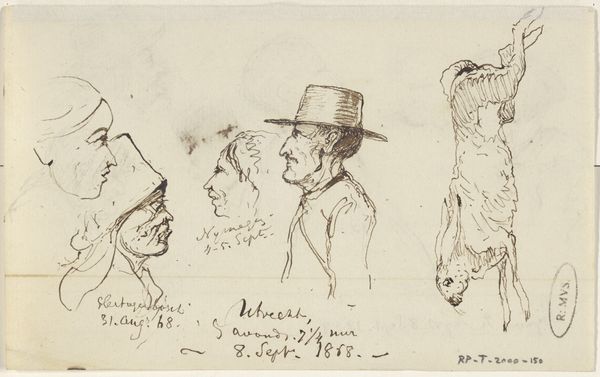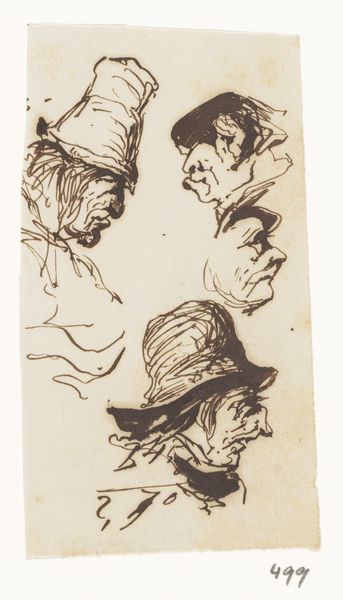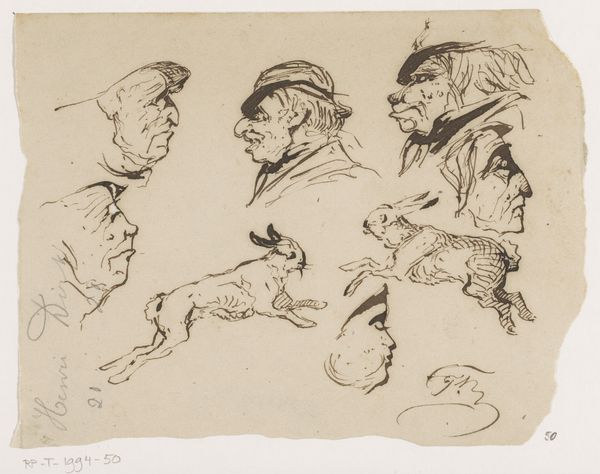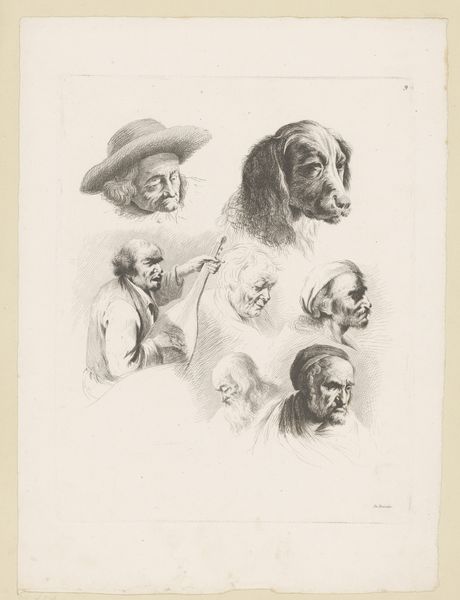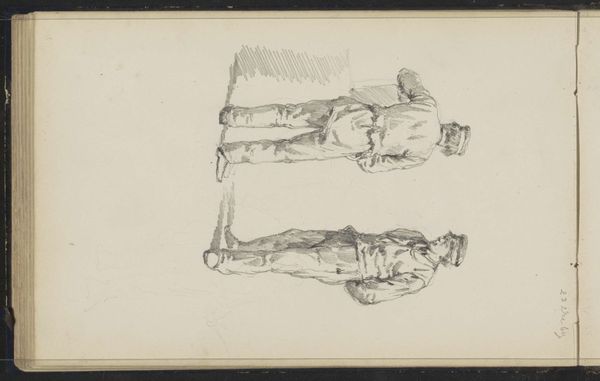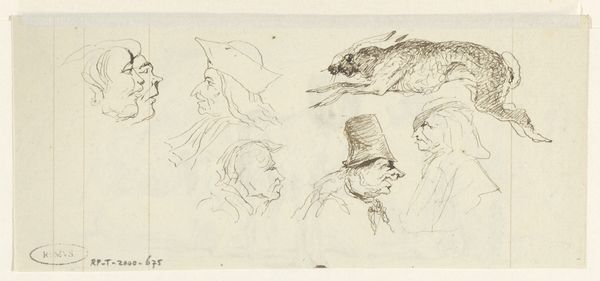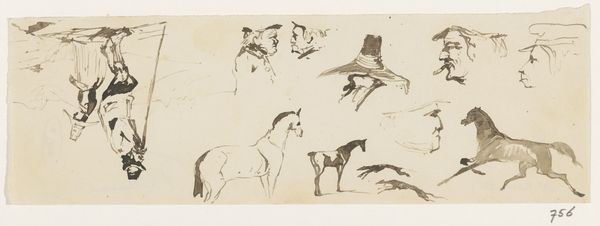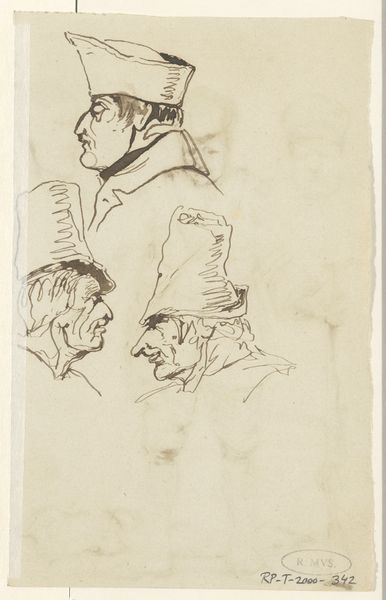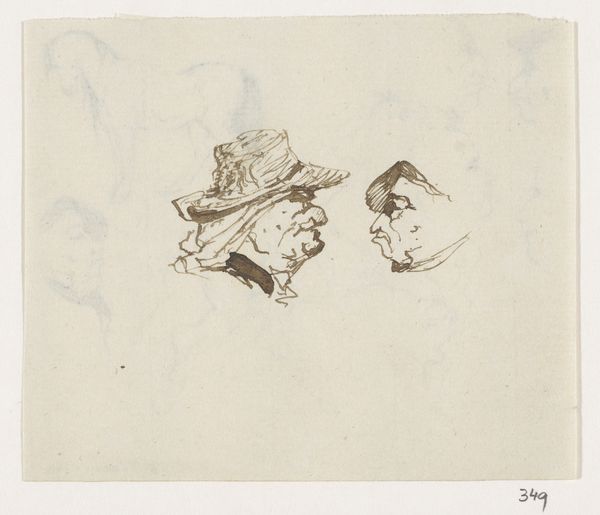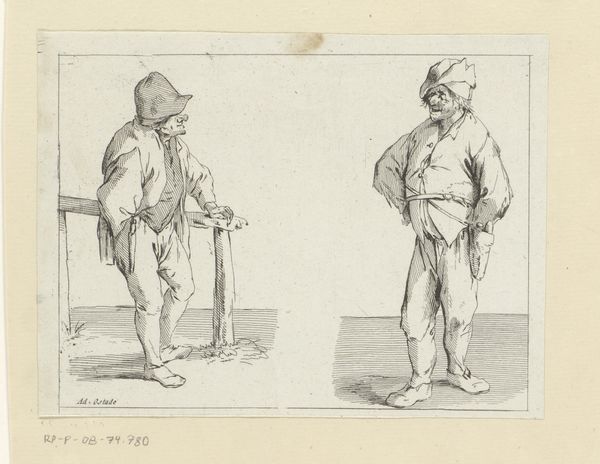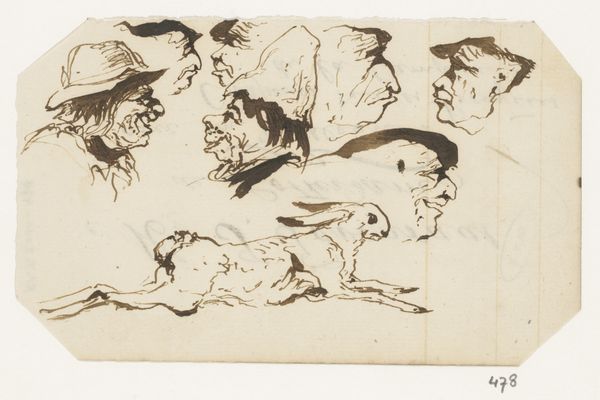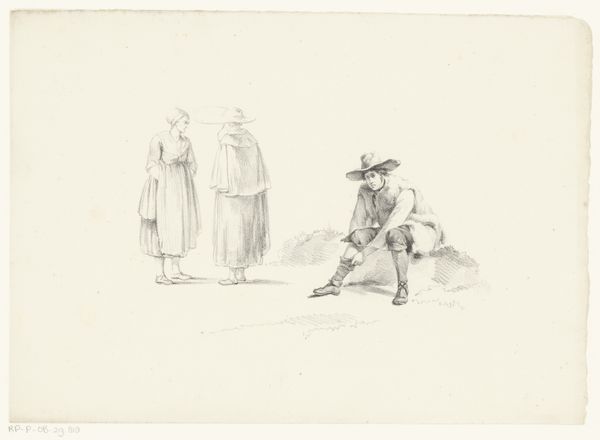
drawing, pencil
#
portrait
#
pencil drawn
#
drawing
#
imaginative character sketch
#
light pencil work
#
pencil sketch
#
figuration
#
character drawing reference
#
idea generation sketch
#
character sketch
#
pencil
#
pencil work
#
genre-painting
#
a lot negative space
#
remaining negative space
Dimensions: height 171 mm, width 253 mm
Copyright: Rijks Museum: Open Domain
Curator: "Studies van twee mannen en een oude vrouw," dating from sometime between 1864 and 1902 by Jeremias Adriaan Adolf Schill. The Rijksmuseum holds this piece, but to me, it's the people that hold your attention! Editor: Gosh, that's immediately bleak, isn’t it? Like a glimpse into characters from a really grim story. The medium really emphasizes that: just pencil on paper—stark and unforgiving. Curator: Indeed! There's a certain starkness, sure. Look how each figure is meticulously sketched. You almost feel you know their temperaments. What do you suppose about the materials? Any particular pencil grade that helps us unlock this dark, psychological space? Editor: I'm interested in how humble pencil work has been essential for draftsmen, artisans and laborers across history to mock-up and realize technical and imaginative plans for grander social projects. That type of under-recognized artistic labor seems meaningful in how it quietly, yet powerfully, connects to different classes and skill levels. This pencil medium here isn’t about high polish; it’s workaday and, yes, a bit somber. Curator: That resonates profoundly! Consider the artist themselves... What life was Schill experiencing that caused the subjects to look so downtrodden? Was the process particularly strenuous? It’s really impossible to know—we can't determine any relationship to material access from it! Editor: Possibly, but I keep returning to the role these character studies played in larger workshop economies and division of labor. While that central figure – the woman - seems completely worn down. I do see strength in her carriage even in old age, but it can’t escape a certain socio-economic determinism Curator: Maybe the starkness, that unforgiving quality we feel, has to do with an awareness of societal inequities. As if, in choosing these subjects, in capturing this sense of hardship, Schill aimed to quietly, critically examine Dutch society and daily toil. Editor: I like that – and on top of my reading the materiality as tied to the reality of production of visual media across class. And on that note, perhaps this seemingly small work does loom larger, socially. Curator: It does. More than a simple sketch, it serves as a time capsule. These characters become archetypes! Everyday melancholy frozen in time for us to contemplate today. Thanks for the reflections. Editor: Thanks – the history of our collective material transformation – that always brings perspective for me, I feel!
Comments
No comments
Be the first to comment and join the conversation on the ultimate creative platform.
